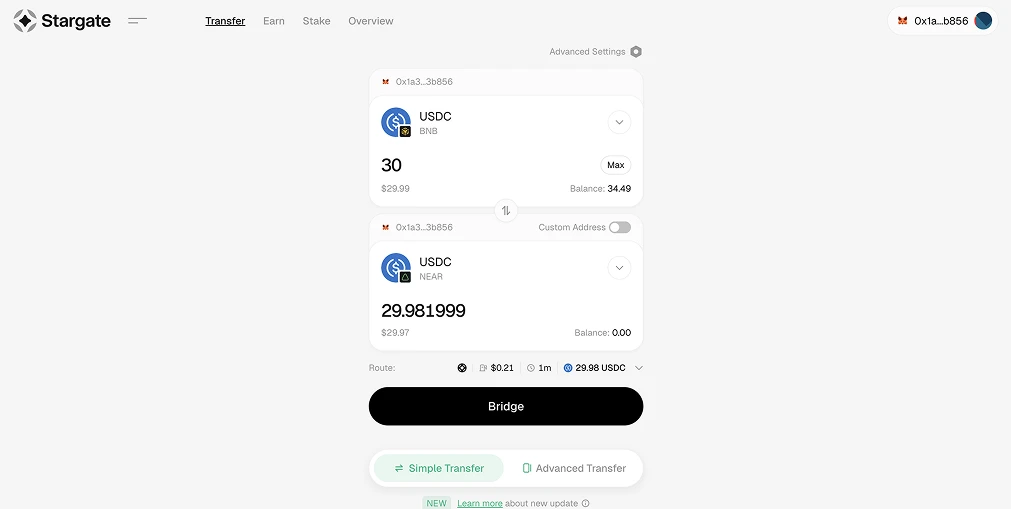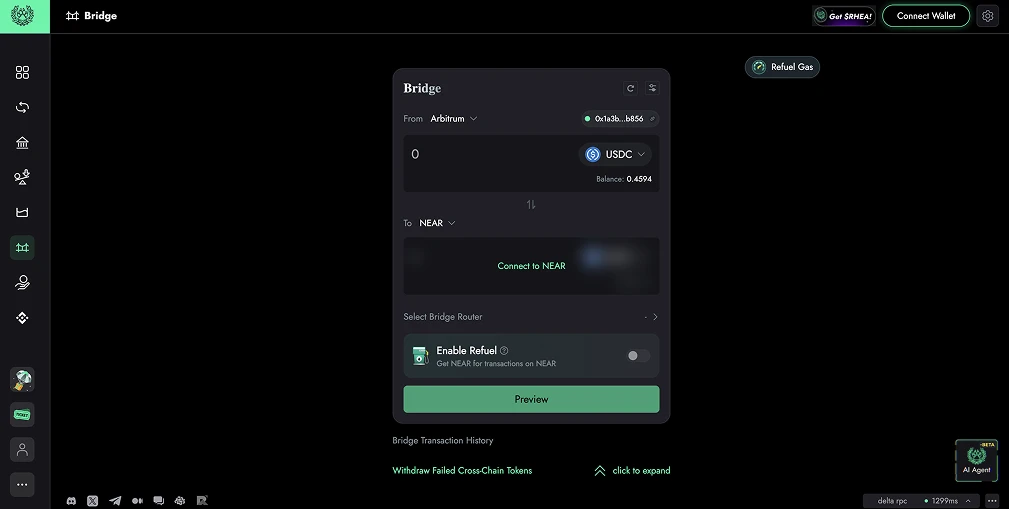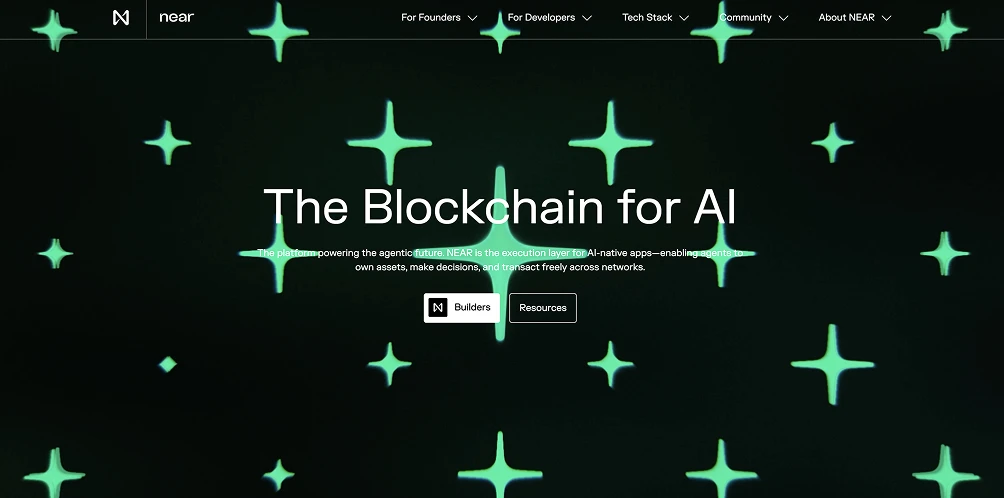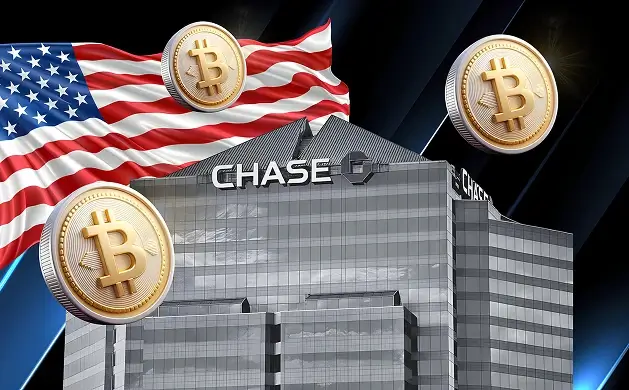How to Bridge to NEAR
.webp)
Summary: The fastest and cheapest way to bridge crypto to NEAR is Stargate Finance, a trusted cross-chain protocol offering secure, instant settlement at low fees (~0.06% per transfer).
Simply connect your wallet, select NEAR as the destination, and choose ETH or stablecoins like USDC or USDT for optimal liquidity. Approve the transaction, pay minimal gas fees, and your tokens arrive in your NEAR wallet within minutes.
Stargate Finance, powered by LayerZero, is the best bridge for NEAR, providing instant settlement, transparent low fees (~0.06%), deep liquidity, and over $65 billion securely transferred.
Supported Networks
NEAR, Ethereum, Solana & More
Trading Fees
0.06% Fee for Cross-Chain Swap
Supported Assets
ETH, USDT, USDC, DAI & More
Can I Bridge to NEAR?
Yes, bridging crypto assets to NEAR is easy and safe using decentralized cross-chain bridges. These tools let you transfer popular tokens like ETH, USDT, and USDC directly onto the NEAR Protocol without centralized exchanges.
Once tokens arrive on NEAR, you can stake for yield, trade NFTs, or use DeFi apps like Rhea Finance and Ref Finance. NEAR’s intuitive features, including named accounts (e.g. john.near), ensure rapid (~1.3 seconds) and low-cost transactions (under 1¢ each).
How to Bridge to NEAR
The easiest way to bridge crypto to NEAR is through Stargate Finance, a trusted cross-chain liquidity protocol supporting 80 blockchains, including Ethereum, Arbitrum, Solana, BNB, Hyperliquid, Base, and Avalanche.
Stargate securely moves native tokens with guaranteed delivery, instant settlement, and over $65 billion transferred to date.
Steps to bridge crypto to NEAR using Stargate:
- Connect Wallet: Go to Stargate's transfer page and link your Web3 wallet (e.g., MetaMask).
- Select Networks and Token: Choose your source blockchain (Ethereum, Arbitrum, etc.), set NEAR as the destination, and select the token to transfer (e.g. USDC).
- Enter Transfer Amount: Input the amount, noting Stargate’s minimum transfer limits (e.g., 0.01 ETH).
- Confirm and Transfer: Approve the transaction in your wallet. Assets arrive rapidly in your NEAR wallet, immediately ready to use.

NEAR Bridging Fees
When bridging crypto to NEAR using Stargate Finance, there are three main fees:
- Base Fee: Stargate charges a standard fee of 0.06% per transfer for most tokens, excluding its native STG token, which incurs no base fee.
- Pool Rebalance Fee: This variable fee depends on liquidity balance between source and destination pools. If pools are imbalanced, fees may rise slightly to incentivize rebalancing.
- Gas Fees: Depend on the source chain, usually under $1 from Layer 2 networks like Arbitrum and Optimism, and around $5–$10 from Ethereum mainnet.
Stargate transparently displays the total fee before confirming your transfer, so review carefully to ensure optimal costs.
Best Alternative Bridges for NEAR Users
While Stargate Finance is an excellent bridge for NEAR, several other trusted alternatives are available:
- RHEA Finance: NEAR-native liquidity solution built on Stargate Finance, supporting assets like USDC, USDt, ETH, and FRAX. While fast and secure, it adds an extra layer of smart-contract risk compared to direct Stargate use.
- Rainbow Bridge: NEAR’s official trustless Ethereum bridge enabling transfers of ETH, stablecoins, and ERC-20 tokens. It charges no fees beyond Ethereum gas costs.
- Rango Exchange: Cross-chain aggregator linking NEAR to 70+ networks, including Ethereum, Arbitrum, Solana, Avalanche, and Cosmos. Supports 1,000+ tokens with swap fees around 0.1%.
Compare fees, transfer speeds, and supported assets to choose the ideal bridging solution for your specific use-case.

About NEAR Protocol
NEAR Protocol is a carbon-neutral, sharded proof-of-stake blockchain focused on speed (~1.3s transactions), low fees (<$0.01), and user-friendly features. Its Nightshade architecture and Doomslug consensus enable efficient scaling and secure decentralization.
Developers build dApps and DeFi platforms using JavaScript, Rust, or Ethereum-compatible Aurora contracts. NEAR simplifies Web3 with human-readable accounts, built-in account abstraction, and seamless cross-chain bridging.
NEAR also supports decentralized AI via Shade Agents, autonomous, multi-chain AI entities that securely manage user-owned assets, execute verified transactions, and maintain user privacy without centralized intermediaries.

Final Thoughts
Bridging crypto to NEAR is fast, secure, and cost-effective using Stargate Finance or Rainbow Bridge, especially from Layer 2 networks.
Consider using RHEA Finance as an alternative for more advanced DeFi yield opportunities, keeping their added smart-contract risks in mind.
Verify fees and supported tokens carefully, then promptly leverage your bridged assets through staking, trading, or DeFi apps within NEAR’s growing ecosystem.
%25201%2520(1).webp)
Written by
Emily Shin
Research Analyst
Emily is passionate about Web 3 and has dedicated her writing to exploring decentralized finance, NFTs, GameFi, and the broader crypto culture. She excels at breaking down the complexities of these cutting-edge technologies, providing readers with clear and insightful explanations of their transformative power.

.webp)
%2520(1).webp)

.webp)
.webp)




